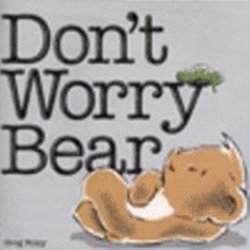I just love this book Thank You, Omu! by Oge Mora. Omu means “queen” in Igbo, a language spoken in Nigeria, a country in Africa. It is what the author, Oge Mora, called her grandma. Let’s say Omu together. What do you call your grandmother?
[There are lots of aspects of this book that can be discussed and build on to support various aspects of early literacy. Here are a few.]
Background knowledge—book and story knowledge: Let’s look at the cover of this book. What do you see? What do you think this book might be about? Choose a repeated phrase to have the children join in with. Have children retell the story in order, using a flannel board or props.
Background knowledge—content knowledge: How do you think the author made the picture? It is called collage, cutting out shapes from paper and painting them or coloring them with marker. Have children make a collage.
Print Awareness: Point out the word Knock! and Thank you, Omu or any of the text written in caps. Point out word in the pictures such as TAXI, Open. Note that Omu is reading a book. The writing of a thank you card.
Phonological Awareness: make the sound of knocking, and point it out.
Letter Knowledge: Point out shapes such as the star on the police officer’s shirt, other shapes in the collages. Spell out Omu as you point to the letters. Letters spelling Thank you Omu on the last page.
Vocabulary: so many words that mean delicious—tasty, scrumptious, delectable. Say repeated phrase together “scrumptious scent wafted out the window”—talk about what the phrase means.

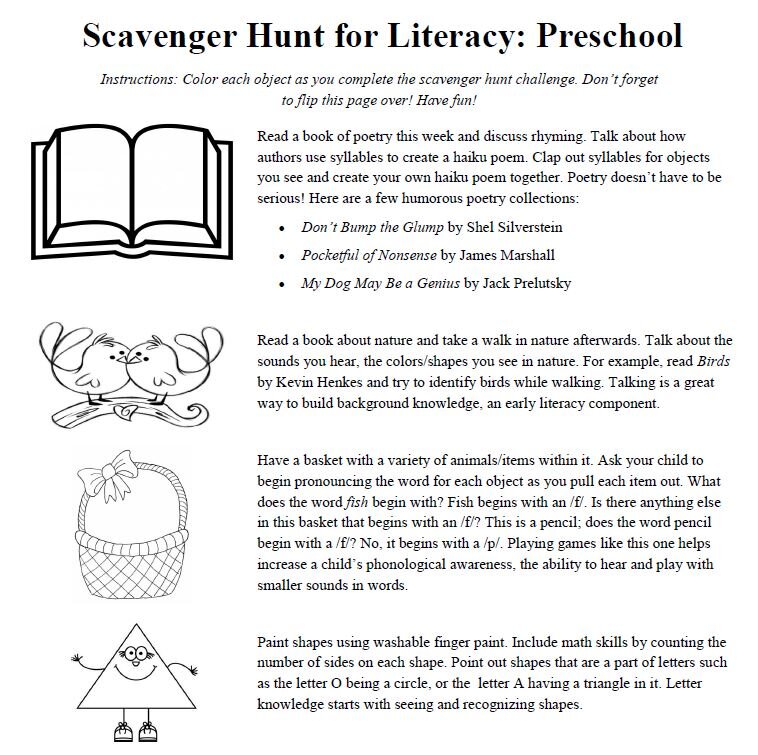
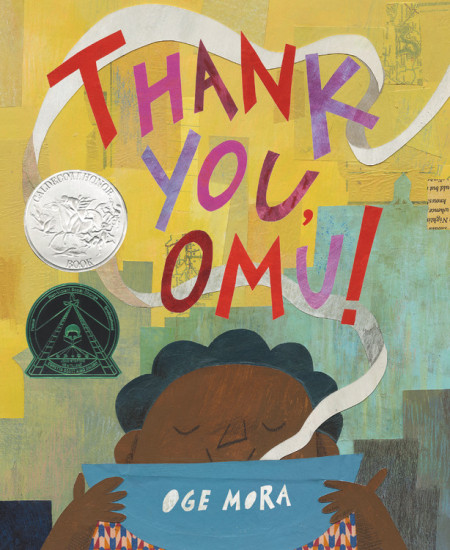


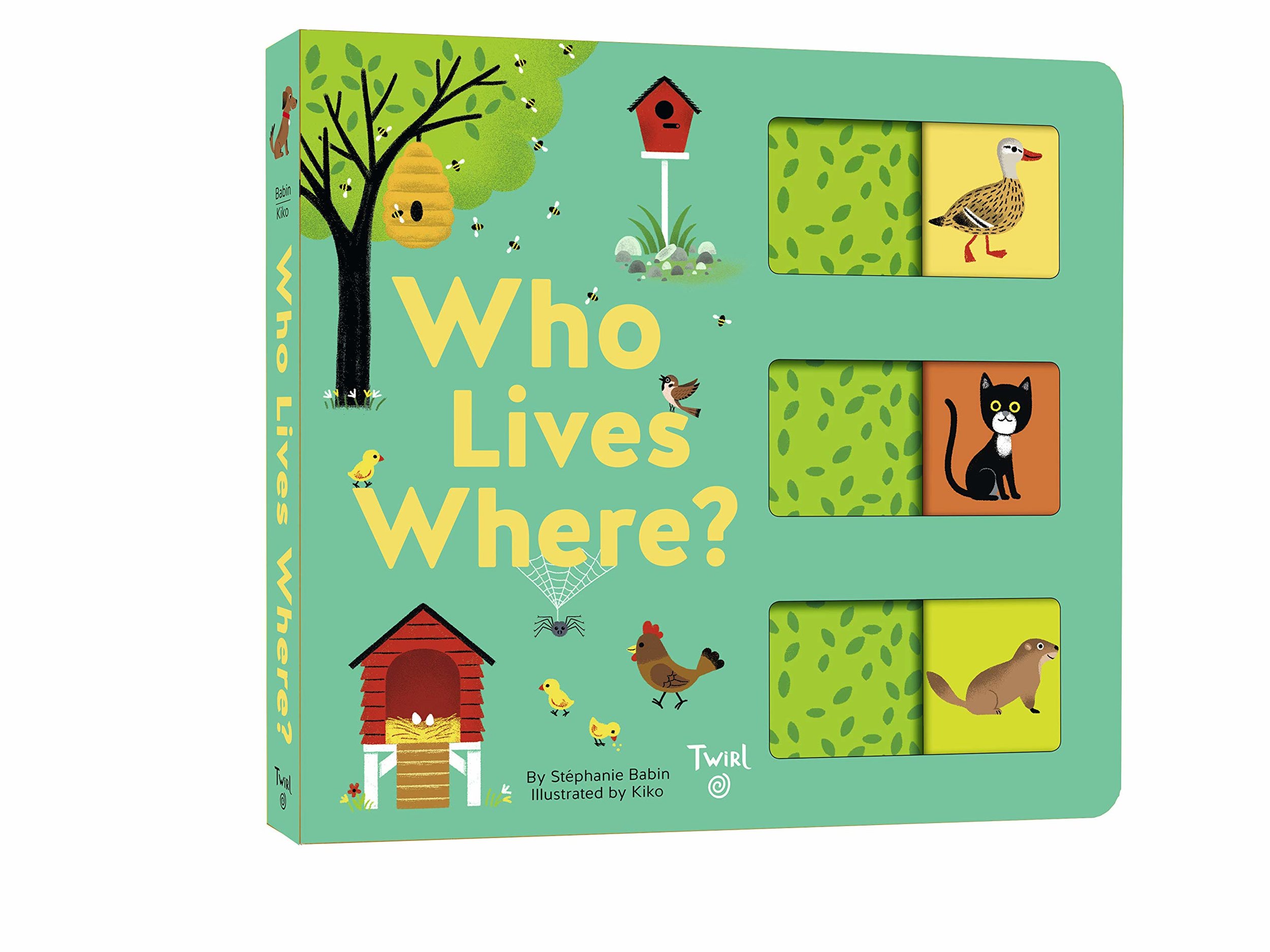

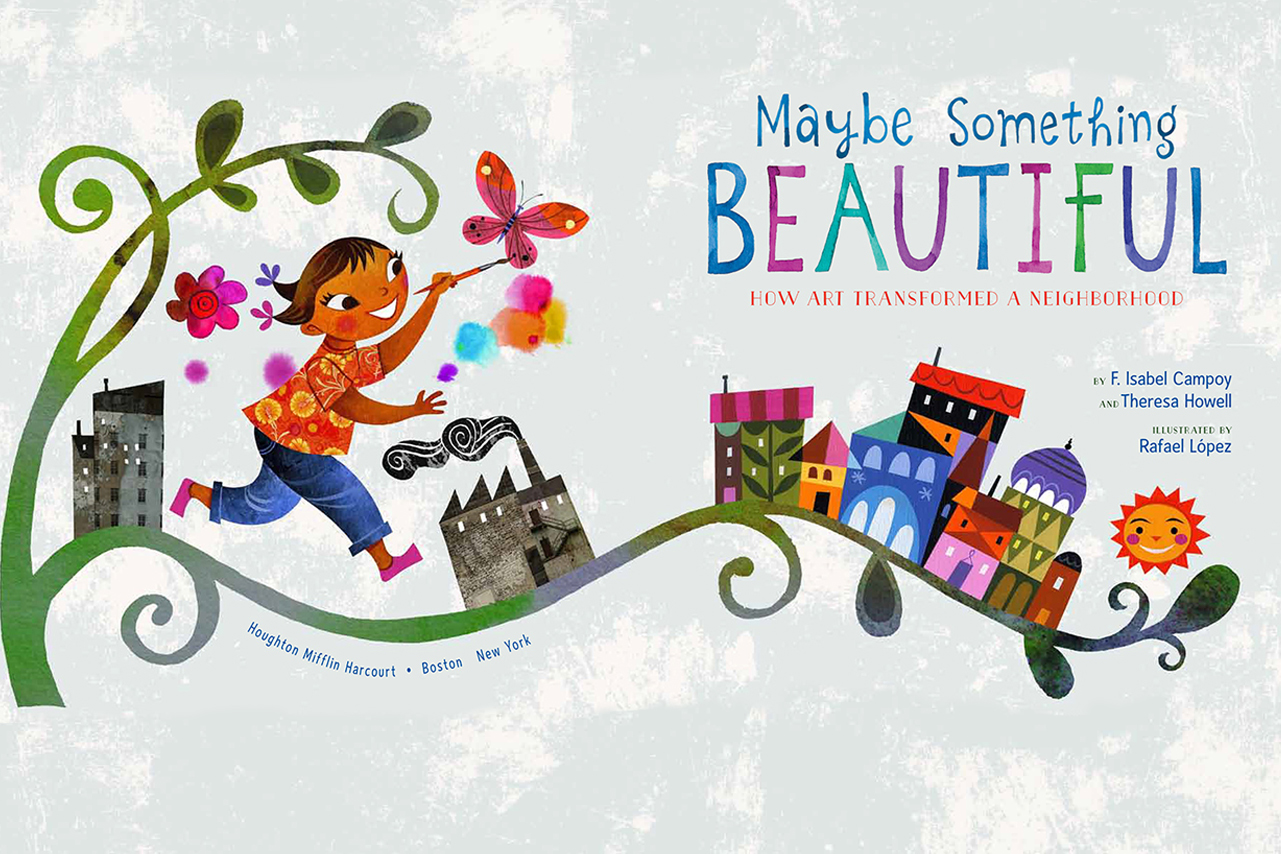




 Early Literacy Aside--Explain: Talking with children as you read books and share rhymes can add to the words they know and to their knowledge if YOU use words they are not familiar with or add information they may not yet know. Both adding to their vocabulary and to their knowledge will help them understand what they read when they learn to read. Say/sing the rhyme with actions:
The itsy bitsy spider went up the waterspout.
Down came the rain and washed the spider out.
Out came the sun and dried up all the rain.
And the itsy bitsy spider climbed up the spout again.
Early Literacy Aside--Example: Here are some examples of the kinds of questions you can ask your children. Then add to what they say to introduce new words and information. [Then you ask the children a couple of questions. Some possibilities are below. Be careful to keep it fun and engaging, not like a test of knowledge.]
Where was the spider going?
What happened when the rain started?
Where do you think spiders live?
Have you seen a spider? Where? What was it doing?
What do you know about spiders?
Early Literacy Aside--Empower: Sometimes we do not know much about some of the topics our children are interested in. We have lots of factual books on a variety of topics like spiders, snakes, dinosaurs, trains, and more. Just let us know what you and your children would like to read about. These books not only make reading enjoyable because yuou are building on your child's interest, you are also setting a good foundation for helping them learn new words and knowledge.
Early Literacy Aside--Explain: Talking with children as you read books and share rhymes can add to the words they know and to their knowledge if YOU use words they are not familiar with or add information they may not yet know. Both adding to their vocabulary and to their knowledge will help them understand what they read when they learn to read. Say/sing the rhyme with actions:
The itsy bitsy spider went up the waterspout.
Down came the rain and washed the spider out.
Out came the sun and dried up all the rain.
And the itsy bitsy spider climbed up the spout again.
Early Literacy Aside--Example: Here are some examples of the kinds of questions you can ask your children. Then add to what they say to introduce new words and information. [Then you ask the children a couple of questions. Some possibilities are below. Be careful to keep it fun and engaging, not like a test of knowledge.]
Where was the spider going?
What happened when the rain started?
Where do you think spiders live?
Have you seen a spider? Where? What was it doing?
What do you know about spiders?
Early Literacy Aside--Empower: Sometimes we do not know much about some of the topics our children are interested in. We have lots of factual books on a variety of topics like spiders, snakes, dinosaurs, trains, and more. Just let us know what you and your children would like to read about. These books not only make reading enjoyable because yuou are building on your child's interest, you are also setting a good foundation for helping them learn new words and knowledge.